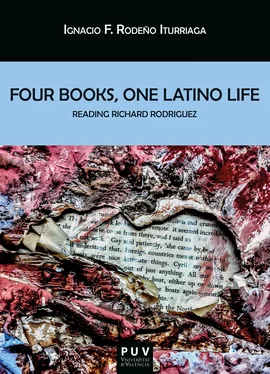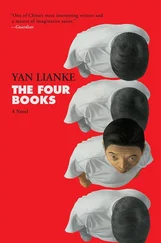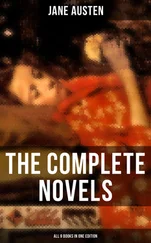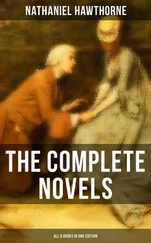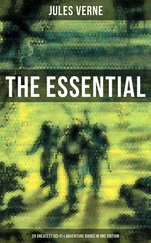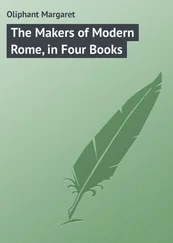As seen, most of the narratives of the self written before the 19 thcentury can be classified in three categories, corresponding to their principal intentions: confession, apology, and memoir. The confession has to do with issues independent of the social determining factors of the writer: the author bares his or her self in order to reveal intrinsic truths about the self. The apology articulates the autobiographer’s coherent and mature position as a comeback to a critical opposition. The memoir is a literary device by which the writer documents the historical event(s) in which she or he had an involvement. The start of the 19 thcentury marks a distinct approach to life writings: relating the account of one’s life is worthy of attention because the individual merits intrinsically the attention. Autobiography becomes a literary record of human evolution in individuality.
William Wordsworth started an autobiographical poem in 1798, which he intended as an appendix to a work under the title The Recluse . In 1804 he expands this “poem to Coleridge,” as he called it, and decides to make it a prologue instead of an appendix to the bigger piece. He finished the thirteen-volume opus in 1805 but refused to publish it. In 1850, his widow posthumously published the autobiography (or “the poem on the growth of my own mind,” as he called it) under the title The Prelude, or Growth of a Poet’s Mind; An Autobiographical Poem . By this time Robert Southey, another of the Lake Poets, had already used the word autobiography in the Quarterly Review .
The year 1845 is when Narrative of the Life of Frederick Douglass, an American Slave, Written by Himself was published, and within four months of this publication, five thousand copies were sold. Having received many positive reviews, by 1860 almost 30,000 copies were sold. Ten years after the first publication of the first autobiography by the abolitionist leader, in 1854, Henry David Thoreau publishes Walden, or Life in the Woods . A year later, in 1855, Frederick Douglass publishes his second autobiography: My Bondage and My Freedom ; and P.T. Barnum put together his first autobiography Life of P.T. Barnum, Written by Himself , which he published massively in order to promote himself and, in turn, his business. Barnum’s other autobiography, which had the same purpose, is Struggles and Triumphs, or Forty Years’ Recollections of P.T. Barnum, Written by Himself (1869).
The first autobiography by a female slave, Incidents in the Life of a Slave Girl , was published in 1861 by Harriet Jacobs under the pseudonym Linda Brent. Life and Times of Frederick Douglass, Written by Himself , published in 1881 and revised in 1892, is Douglass’ third autobiography. In it, the abolitionist gave more details about his life as a slave and his escape from slavery than he could in his two previous autobiographies, because of the emancipation of slaves in the US. It is also the only one of his autobiographies that deals with his life during and after the Civil War. By 1897, Oscar Wilde writes Epistola: In Carcere et Vinculis , which is published bowdlerized in 1905 as De Profundis . After a turbulent history of editions, the full, corrected text saw the light in 1962 in Rupert Hart-Davis’s The Letters of Oscar Wilde .
Danish émigré to the United States, Jacob Riis, published his autobiography The Making of an American in 1901. Six year later, in 1907, The Education of Henry Adams is printed privately and distributed by its author. Its commercial publication did not happen until 1918, after Henry Adams’ death, to be awarded the Pulitzer Prize a year later. Bicontinental writer Henry James wrote three autobiographies in the 1910s: A Small Boy and Others (1913), Notes of a Son and Brother (1914), and the incomplete, posthumous The Middle Years (1917). Lithuanian immigrant to the U.S. and anarchist feminist Emma Goldman penned Living My Life in 1931. In 1932, John G. Neihardt transcribes the autobiography of Lakota medicine man Black Elk, under the title Black Elk Speaks: Being the Life Story of a Holy Man of the Oglala Sioux . This book has caused quite a controversy, due to issues of authorship: Native Americans and scholars have questioned whether Neihardt’s account is accurate and fully represents the views or words of Black Elk. H.G. Wells published Experiment on Autobiography in September of 1934. By now, the boundaries between autobiography and other genres start to blur. Hence, Henry Miller’s Tropic of Cancer (1934) is seen as both a novel as well as an autobiography. In 1937, Gertrude Stein published Everybody’s Autobiography , which was devised as the continuation of her 1933 The Autobiography of Alice B. Toklas . In 1945 Richard Wright published Black Boy: A Record of Childhood and Youth , putting off until 1977 the publication of the second part of his autobiography: American Hunger . French-American mystic Thomas Merton issued his spiritual autobiography The Seven Storey Mountain in 1948. The decade of the 1960s sees the following autobiographies penned by American figures: Man Ray’s Self-Portrait (1963), Malcolm X and Alex Haley’s The Autobiography of Malcolm X (1965), Norman Mailer’s The Armies of the Night (1968), which seeks to muddle the limits among history, fiction, and narrative of the self.
As one can see by the 1960s, the peak of the Civil Rights Movement in the United States, the so-called ‘ethnic’ writers have found a literary tradition within the autobiographical genre. There were already texts in circulation written by authors whose identity was “hyphenated” –i.e. Danish-American, Lithuanian-American, African-American, Mexican-American, etc.– but the late 1960s saw an increase in these texts. In a sense, autobiography as a genre has helped in its history to democratize literature. This is particularly relevant in the context of the United States, where autobiography provided forms of cultural enfranchisement to the non-mainstream communities, whether they be ‘ethnic,’ non-heteronormative, and/or feminist. This increase in life narratives by women, the working class, the poor, the minorities has brought to national attention their social conditions, and has helped depict the actual composite of the nation, whether social, cultural, or otherwise.
While African-American literature might come quickly to mind when speaking of life narratives by minorities (from the autobiographies of Douglass to those of Booker T. Washington, Richard Wright, Langston Hughes, Malcolm X, Sidney Poitier, Maya Angelou, to President Obama –to name a few), other groups have also produced narratives of the self. Among the Asian-American autobiographies one should mention Chiang Yee’s The Silent Traveller (1937), Carlos Bulosan’s America Is in the Heart (1946), Monlin Chiang’s Tides From the West: A Chinese Autobiography (1947), Maxine Hong Kingston’s The Woman Warrior: Memoirs of a Girlhood Among Ghosts (1976), Theresa Hak Kyung Cha’s Dicteé (1980), Akira Kurosawa’s Something Like an Autobiography (1982), Nien Cheng’s Life and Death in Shanghai (1986), Meena Alexander’s Fault Lines (1992), and Amy Tan’s The Opposite of Fate: A Book of Musings (2003).
US Latino authors have not been extraneous to this, and have often resorted to the narratives of the self to build and cement a group conscience in the community. Autobiographical writing has not been profuse in Hispanic letters –whether Latin American or Spanish– but these authors do take advantage of the richer tradition in English letters. The following canon does not intend to be exhaustive.
Читать дальше
